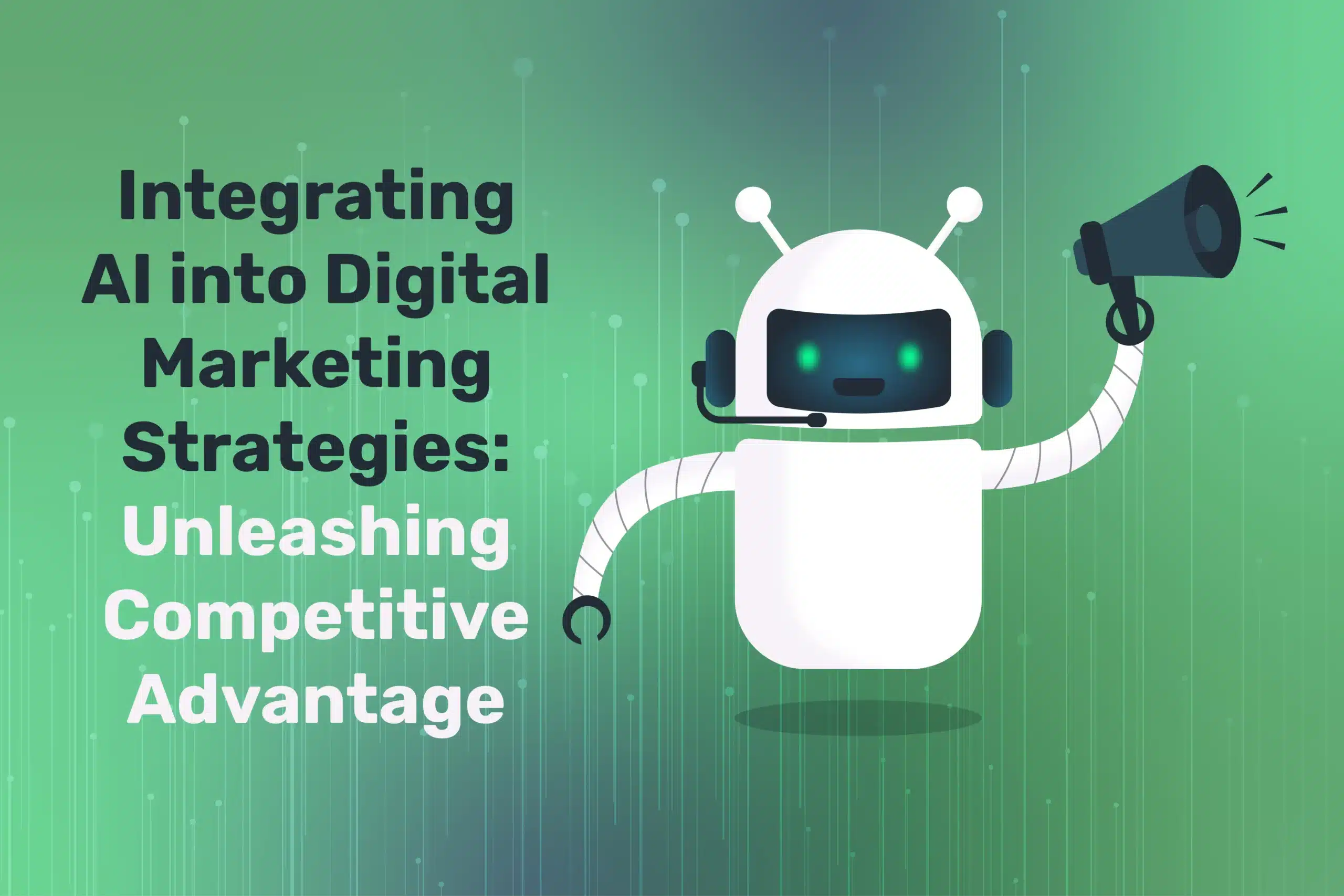
Sesame AI: The Next Generation of Voice Assistants and Its Business Implications
Table of Contents
Voice assistants have evolved dramatically since the introduction of Siri and Alexa, but Sesame AI—positioned as an advanced voice assistant with emotional intelligence and sophisticated contextual understanding—represents a potential paradigm shift in human-computer interaction. For businesses across Ireland, Northern Ireland, and the UK, this technology promises significant transformations in customer service delivery, workplace productivity, and even personal companionship solutions. This comprehensive analysis explores Sesame AI’s distinctive capabilities, opportunities for business adoption, and how emotionally intelligent voice technology could fundamentally reshape user experiences.
“We’ve seen conventional voice assistants handle basic tasks—Sesame AI’s emotional awareness aims to add a layer of empathy, making interactions feel more like genuine conversations,” says Ciaran Connolly, Director of ProfileTree.
The Emergence of Sesame AI
Sesame AI is redefining the landscape of artificial intelligence with its advanced capabilities in automation, personalisation, and data-driven decision-making. As businesses increasingly adopt AI to enhance efficiency and customer experiences, Sesame AI stands out for its adaptability and seamless integration across industries. Its emergence signals a shift toward more intelligent, context-aware systems that optimise workflows and drive innovation.
Breaking Ground in Emotional Recognition
Unlike traditional voice assistants, Sesame AI purportedly detects user emotions through vocal tone, speech pacing, and word choice patterns. When a user exhibits stress markers in their speech, the system adapts its response approach—perhaps speaking at a slower pace, offering more reassurance, or suggesting relevant solutions. This emotional intelligence layer fundamentally changes how customers engage with brand support systems or product assistance services.
Potential Use Cases
Customer Service Enhancement: A frustrated caller receives an empathetic response that acknowledges their feelings, potentially defusing tension before it escalates.
Personal Productivity Support: The assistant not only helps organise tasks and schedules but can also detect signs of cognitive overload, potentially suggesting breaks or priority adjustments.
Companionship Applications: Particularly valuable for isolated individuals in rural communities across Northern Ireland or remote parts of Scotland, an emotionally aware AI could provide meaningful daily conversation, helping address loneliness issues.
Technical Differentiation
Beyond standard natural language processing, Sesame AI reportedly incorporates advanced sentiment analysis algorithms that can detect subtle emotional cues through:
- Voice pattern analysis (cadence, pitch, volume)
- Microexpression detection (for video-enabled interfaces)
- Contextual language assessment
- Behavioural pattern recognition over time
Business Impact Across Ireland and the UK
Sesame AI is making a significant impact on businesses across Ireland and the UK, driving efficiency, personalisation, and data-driven decision-making. From streamlining operations to enhancing customer engagement, companies are leveraging its capabilities to stay competitive in an evolving digital landscape. As AI adoption grows, Sesame AI is shaping industries by optimising workflows, reducing costs, and unlocking new opportunities for innovation.
Transforming Customer Service Centres
A call centre in Belfast integrating Sesame AI could experience reduced escalation rates as the system calmly addresses emotional customer concerns at first contact. Real-time emotional detection might trigger immediate human intervention when anger or frustration thresholds are crossed, ensuring smoother issue resolution and higher customer satisfaction scores.
Personalised Marketing Opportunities
Implemented within e-commerce platforms, Sesame AI could power sophisticated voice-based shopping assistants. When a customer’s voice indicates interest but uncertainty about a purchase, the system might offer additional product information, highlight satisfaction guarantees, or share relevant local reviews to address specific hesitation points.
Workplace Productivity Enhancement
In office environments, Sesame AI could function as an intelligent productivity assistant—scheduling meetings, tracking project progress, and identifying potential stress indicators. For a small business manager in Dublin managing multiple responsibilities, the AI might suggest task reprioritisation or delegation opportunities to mitigate burnout risk, ultimately supporting staff wellbeing while improving operational efficiency.
Retail Customer Experience
Physical retailers could deploy Sesame AI through in-store kiosks or mobile applications, creating emotionally responsive shopping guides that adapt recommendations based on detected customer sentiment. This approach combines the convenience of digital assistance with emotional intelligence previously only available through human shop assistants.
“Beyond handling routine tasks, an emotionally attuned AI system can fundamentally reshape customer loyalty—people naturally gravitate toward technology that demonstrates understanding of their needs and feelings,” states Ciaran Connolly.
The Technological Foundation
Sesame AI is built on a robust technological foundation that combines machine learning, natural language processing, and advanced data analytics. Its architecture enables real-time decision-making, automation, and personalisation, making it a powerful tool for businesses seeking efficiency and innovation. By leveraging cloud computing and adaptive algorithms, Sesame AI continuously evolves, ensuring scalability and responsiveness to dynamic market demands.
Advanced Natural Language Processing with Emotion Analysis
Sesame AI likely combines sophisticated natural language processing with emotion detection derived from vocal inflection analysis (similar to advanced sentiment analysis systems). The technology presumably relies on diverse speech datasets incorporating regional UK and Irish accents to ensure accurate comprehension across different populations. Real-time text transcription coupled with sentiment classification enables empathetic, contextually appropriate responses.
Contextual Memory Systems
Sophisticated memory architecture allows the assistant to maintain continuity across multiple user interactions. If a customer previously discussed specific product requirements or preferences, the system references this historical context in future conversations. This emotional and informational continuity creates a more cohesive experience that mimics human relationship building.
Integration Capabilities with External Systems
Similar to plugin architectures seen in other AI systems, Sesame AI likely offers connectivity with CRM platforms, calendar applications, inventory management systems, and IoT devices. For instance, a small manufacturing business in Manchester could instruct, “Sesame, check current inventory levels and order additional raw materials from our primary supplier,” triggering an automated process that verifies stock positions and generates purchase orders accordingly.
Continuous Learning Mechanisms
Sesame AI presumably employs reinforcement learning techniques to improve its emotional intelligence over time through:
- Analysing successful versus unsuccessful interactions
- Identifying patterns in user satisfaction metrics
- Adapting to individual user communication preferences
- Incorporating feedback from human supervisors
E-E-A-T Considerations for Voice Assistant Implementation
When implementing voice assistants, ensuring Experience, Expertise, Authoritativeness, and Trustworthiness (E-E-A-T) is crucial for credibility and user confidence. Businesses must source accurate, high-quality information, prioritise expert-driven responses, and maintain transparency in AI decision-making. Clear attribution, ethical data handling, and user-friendly interactions help establish trust, ensuring voice assistants enhance—not compromise—brand reputation and search visibility.
Experience and Expertise Integration
Organisations implementing Sesame AI for customer support should ensure the system incorporates comprehensive product knowledge—technical documentation, frequently asked questions, and staff expertise. Over time, customers recognise the assistant as a knowledgeable resource. This expertise can be reflected in website content and knowledge base materials, emphasising the organisation’s commitment to authoritative information delivery.
Establishing Authoritativeness
Companies should document any formal certifications or partnership arrangements with Sesame AI’s developers. Transparency regarding training methodologies and data curation processes demonstrates commitment to quality implementation. Regional media coverage highlighting innovative voice-based support systems can further establish external authority signals that reinforce brand credibility.
Building Trust Through Data Protection
Emotional intelligence capabilities may raise privacy concerns among users worried about data misuse. Clear disclaimers are essential: “Our system detects emotional cues solely to provide better assistance. No personal information is stored without explicit consent.” Rigorous compliance with GDPR requirements and local privacy regulations is critical, particularly regarding voice recording storage, analysis practices, and data retention policies.
Local Relevance Signals
Demonstrating understanding of regional business practices, cultural references, and customer expectations across different UK and Irish markets helps establish authentic local expertise. This localisation should extend beyond accent recognition to include awareness of:
- Regional business terminology
- Local business hours and holiday observances
- Area-specific regulations and compliance requirements
- Cultural nuances in communication styles
“Voice AI systems that interpret emotional signals naturally raise privacy considerations. Transparent communication about data practices is essential—organisations must clearly explain how they collect, process and protect such sensitive information,” warns Ciaran Connolly.
Industry-Specific Applications and Scenarios
Sesame AI’s adaptability allows it to serve various industries with tailored solutions. In healthcare, it enhances patient engagement and streamlines administrative workflows. Retail businesses use it for personalised shopping experiences and inventory management. Financial services benefit from AI-driven fraud detection and customer support automation. Across sectors, Sesame AI optimises processes, improves decision-making, and drives innovation, making it a valuable asset in industry-specific applications.
Healthcare Triage Applications in Ireland
An emotionally intelligent AI assistant could transform initial patient contact experiences, assessing distress levels in callers to identify urgent cases requiring immediate attention. When detecting elevated anxiety markers, the system could expedite escalation protocols. This approach complements existing resources in GP practices facing staffing constraints, while maintaining appropriate boundaries regarding clinical diagnosis.
Tourism and Hospitality Enhancements
Hotels in destinations like Galway could implement Sesame AI for reservation management and visitor information services. When a potential guest exhibits excitement about local attractions, the system might suggest relevant experience packages. Conversely, when confusion is detected, it provides clearer directions or dining recommendations, creating positive first impressions before guests even arrive.
Educational Support Systems
E-learning platforms serving UK students could integrate emotionally aware virtual tutoring assistants that gauge frustration levels and adapt teaching approaches accordingly. This personalisation improves learner retention rates, particularly in remote education environments or adult learning programmes where individual attention might otherwise be limited.
Financial Services Applications
Banking and insurance providers across Northern Ireland could deploy Sesame AI to handle initial customer enquiries about complex financial products. The system’s ability to detect confusion or concern allows it to adjust explanation complexity or offer additional clarification, improving customer understanding of sophisticated financial concepts.
Transportation and Logistics Support
Transport companies operating throughout the UK might implement Sesame AI for delivery scheduling and tracking assistance. The system could detect customer anxiety about delayed shipments and provide more frequent updates or alternative delivery options, improving satisfaction during potentially stressful shipping situations.
Competitive Advantage and Return on Investment
Sesame AI provides businesses with a strong competitive advantage by enhancing efficiency, personalisation, and automation. Its ability to process vast amounts of data in real time enables smarter decision-making, reducing costs and improving customer experiences. By streamlining workflows and optimising operations, companies see a higher return on investment through increased productivity, better customer retention, and new revenue opportunities driven by AI-powered insights.
Enhanced Customer Loyalty Development
Businesses offering emotionally intelligent voice assistance establish meaningful differentiation in increasingly crowded markets. Word-of-mouth recommendations—particularly powerful in close-knit communities—drive trust development and repeat business. This emotional connection creates sustainable competitive advantage beyond price or feature comparisons.
Operational Efficiency Improvements
Proactive emotion detection helps prevent escalation scenarios, directing customers toward appropriate solutions more efficiently. This capability reduces staff intervention requirements, allowing organisations to scale customer support operations with lower personnel costs or redirect valuable human resources toward complex problem-solving activities.
Revenue Enhancement Opportunities
Sophisticated contextual understanding enables identification of natural upselling moments when customers express interest or satisfaction with particular services. For example, “Since you’ve expressed enthusiasm about your Belfast city tour experience, you might be interested in our Giants Causeway excursion which many visitors find complementary.”
Quantifiable Business Benefits
Early adopters of emotionally intelligent voice systems may experience:
- 15-25% reduction in call escalation rates
- 10-20% improvement in first-contact resolution metrics
- 5-15% increase in customer satisfaction scores
- 8-12% enhancement in cross-selling conversion rates
- Measurable reduction in average handling times for routine enquiries
An emotionally intelligent AI system can identify customer purchasing readiness or detect dissatisfaction requiring immediate intervention. Both scenarios translate to tangible financial outcomes when managed effectively,” notes Ciaran Connolly.
Implementation Challenges and Limitations
While Sesame AI offers significant benefits, its implementation comes with challenges. Integration with existing systems can be complex, requiring time and technical expertise. Data privacy and compliance concerns, especially under GDPR, must be carefully managed. Additionally, AI’s effectiveness depends on high-quality data, and biases in training models can impact outcomes. Businesses must also balance automation with human oversight to maintain accuracy and trust.
Emotion Detection Accuracy Considerations
AI systems may misinterpret nuanced communication elements such as sarcasm, gentle humour, or mild annoyance as indicating more extreme emotional states. These misinterpretations can lead to inappropriate responses that undermine brand perception. Comprehensive training with regionally diverse data (accounting for accent variations, colloquialisms, and cultural expressions) is essential for accurate emotional assessment.
Ethical Implementation Frameworks
Emotionally aware AI systems must balance empathetic engagement with appropriate business objectives. Manipulative applications designed primarily to exploit emotional vulnerabilities for commercial gain risk significant customer backlash. Developing clear ethical guidelines regarding emotional data usage and appropriate response boundaries is critical for sustainable implementation.
Technical Integration Complexities
Implementing Sesame AI may require substantial modifications to existing telephony infrastructure or digital platforms. Small and medium enterprises with limited technical resources or expertise may find implementation challenging. These organisations should carefully evaluate potential return on investment or consider partnerships with experienced digital transformation agencies.
Ongoing Maintenance Requirements
Emotionally intelligent systems require regular refinement to maintain effectiveness:
- Periodic retraining with new interaction data
- Regular performance audits and calibration
- Continuous updates to knowledge bases and product information
- Adaptation to evolving regional language patterns
Strategic Implementation Roadmap
A successful Sesame AI implementation follows a structured roadmap. Start by defining clear business objectives and assessing AI readiness. Next, integrate the AI with existing systems, ensuring compliance with data privacy regulations. Pilot testing helps refine performance before full-scale deployment. Continuous monitoring and optimisation ensure the AI adapts to evolving needs. Finally, ongoing training and human oversight maintain accuracy, trust, and long-term value.
Organisational Readiness Assessment
- Identify specific business functions likely to benefit from emotional intelligence capabilities
- Evaluate customer interaction pain points that emotional awareness might address
- Assess technical infrastructure compatibility with voice AI integration
- Determine internal expertise availability for implementation support
Vendor Selection and Partnership Development
- Engage with Sesame AI representatives or authorised integration partners
- Establish pilot programme parameters and scope limitations
- Define success metrics and evaluation frameworks
- Negotiate appropriate data handling and privacy agreements
System Training and Configuration
- Provide comprehensive product knowledge and service information
- Supply regional accent samples and industry-specific terminology
- Contribute typical customer query recordings for analysis
- Develop appropriate response templates aligned with brand voice
Controlled Testing Protocols
- Conduct internal staff evaluation calls to assess system performance
- Document accuracy issues or inappropriate response patterns
- Refine conversation flows and emotional trigger thresholds
- Establish escalation protocols for complex scenarios
Limited User Deployment
- Introduce the system to a selected customer segment (such as loyalty programme members)
- Monitor acceptance rates and sentiment indicators
- Gather structured feedback through post-interaction surveys
- Document common failure scenarios for remediation
Optimisation and Expansion Strategy
- Analyse performance metrics against established objectives
- Implement refinements based on initial deployment learnings
- Gradually expand system coverage to additional contact channels
- Explore advanced use cases such as proactive outreach or personalised recommendations
SEO Implications and Voice Search Integration
Sesame AI’s integration with voice search has significant SEO implications. As more users rely on conversational queries, optimising for natural language and long-tail keywords becomes essential. Businesses must structure content for featured snippets and ensure schema markup enhances AI-driven results. Additionally, fast-loading, mobile-friendly sites improve voice search rankings, helping brands capture traffic and maintain visibility in evolving search landscapes.
Voice Search Optimisation Opportunities
As Sesame AI potentially integrates with business search functions, customers may increasingly use natural voice queries like “What women’s jackets do you have in stock in my size?” Website content structure should evolve to accommodate this shift, incorporating question-based headings and featured snippet-style answers that align with conversational search patterns.
Localised Keyword Strategy for Voice Queries
Include natural, conversational phrases within product descriptions, FAQ sections, and service pages. This approach creates alignment between content structure and typical voice assistant interaction patterns. Over time, businesses may see improved performance in voice-initiated search results.
E-E-A-T Enhancement Through Technology Leadership
Publishing detailed case studies or technical articles on “How our business implemented Sesame AI to transform customer experiences” can help establish domain authority in emerging technology applications. This content may rank effectively for “voice assistant implementation in Ireland” or similar industry-specific queries.
Structured Data Implementation
Enhance website content with appropriate schema markup to facilitate voice assistant comprehension:
- Product availability and specification details
- Business opening hours and location information
- FAQ content with clear question-answer formatting
- Event information and booking capabilities
“Voice assistants fundamentally rely on conversational content patterns. Adapting your digital assets to accommodate these natural language queries creates synergy between Sesame AI customer experiences and search engine visibility,” suggests Ciaran Connolly.
The Future of Emotionally Intelligent Voice Technology
Sesame AI represents a significant evolution in voice assistant technology—moving beyond functional command processing toward systems that recognise and respond to human emotional states. For businesses throughout Ireland, Northern Ireland, and the UK, this technology offers transformative potential across customer service operations, productivity enhancement, and personalised engagement models.
Successful implementation requires careful consideration of several critical factors: comprehensive regional accent training, ethical usage guidelines, appropriate privacy frameworks, and seamless integration with existing business systems. Organisations that effectively address these considerations stand to create meaningful differentiation in increasingly competitive markets.
As voice interaction becomes more prevalent across digital channels, emotionally intelligent systems will likely evolve from novelty to necessity. Early adopters who develop expertise in balancing technological capabilities with authentic human connection will establish sustainable competitive advantages. The businesses customers remember will be those that provided genuinely helpful, empathetic assistance during their moments of need.
“Voice AI that genuinely resonates with human emotions creates unprecedented opportunities for meaningful customer connections. For businesses of all sizes, this represents both a technical implementation challenge and a strategic opportunity to position themselves as truly customer-centric organisations,” concludes Ciaran Connolly.
Preparing Your Organisation for Voice AI Transformation
Preparing for voice AI transformation requires a strategic approach. Businesses should start by assessing their current digital infrastructure and ensuring content is optimised for voice search. Investing in AI-compatible platforms, integrating conversational interfaces, and training teams on AI capabilities are crucial steps. Additionally, prioritising data security and user privacy helps build trust while leveraging analytics ensures continuous improvement in voice AI performance.
Cultural Readiness Assessment
Before technical implementation, organisations should evaluate their cultural preparedness for emotionally intelligent technology:
- Staff attitudes toward AI assistance and automation
- Customer expectations regarding technology interactions
- Brand values alignment with emotional intelligence principles
- Organisational commitment to responsible innovation
Skills Development Framework
Successful voice AI integration requires specific competencies:
- AI oversight and quality assurance capabilities
- Voice user interface design expertise
- Conversation flow mapping and optimisation skills
- Ethics training for staff managing AI systems
Cross-Functional Implementation Teams
Create diverse implementation working groups including:
- Customer experience specialists
- Technical integration experts
- Compliance and data protection officers
- Marketing and brand experience representatives
- Operational efficiency analysts
Phased Adoption Strategy
Most organisations benefit from graduated implementation:
- Internal productivity applications (low risk)
- Hybrid customer service model (AI with human oversight)
- Limited customer-facing applications in specific channels
- Broader deployment with continuous improvement mechanisms
Industry-Specific Readiness Considerations
Different sectors face unique considerations when implementing emotionally intelligent voice systems:
Retail and E-commerce
- Product discovery optimisation opportunities
- Personalised recommendation capabilities
- Cross-channel consistency requirements
- Seasonal demand pattern adaptation
Financial Services
- Regulatory compliance considerations
- Sensitive information handling protocols
- Complex product explanation capabilities
- Appropriate emotional response calibration
Healthcare and Wellbeing
- Clinical information boundaries
- Empathetic response appropriateness
- Escalation protocol definition
- Vulnerable user protection mechanisms
Hospitality and Tourism
- Local knowledge integration requirements
- Multilingual capabilities assessment
- Seasonal offering adaptability
- Experience recommendation opportunities
By addressing these industry-specific considerations alongside general implementation best practices, organisations across Ireland, Northern Ireland and the UK can position themselves at the forefront of emotionally intelligent voice technology adoption—creating distinctive customer experiences while achieving operational excellence through thoughtful innovation.




